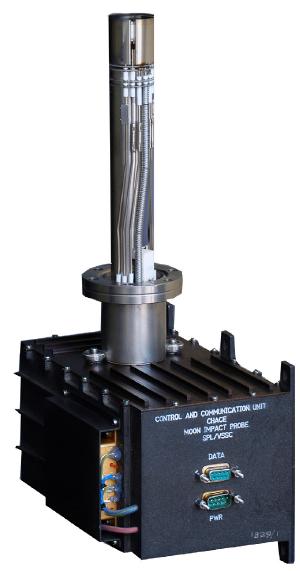CHACE on Chandrayaan-1

Flight Model of CHACE (from Sridharan et al., 2010)
The Chandra's Altitudinal Composition Explorer (CHACE) was one of the three experiments on the Moon Impact Probe (MIP) experiment on Chandrayaan-1. CHACE was a neutral mass spectrometer from SPL, VSSC. It had the scientific objective to study the latitudinal-altitudinal distribution of neutral composition on the sunlit side of the tenuous lunar atmosphere. CHACE performed well on November 14, 2008, both during the rehearsal phase and during the actual mission when the MIP was released from the mother spacecraft Chandrayaan-1 at 100 km from the Lunar surface, and had a free-fall along the 140-degree East longitude landing close to the Lunar South Pole at 89 degree. Observations were obtained with an altitude resolution of 250 m and a latitudinal resolution of 0.1 degree from 45N to 89-degree South latitude. The CHACE was the first successful experiment to measure the composition of the Lunar atmosphere in its sunlit side. The major scientific outcomes from CHACE data analysis are listed below:
- Direct evidence for water (H2O) in the sunlit lunar exosphere.
- CO2 dominance in the sunlit lunar exosphere.
- Indication of lunar North - South asymmetry (spatial heterogeneity) in radiogenic activity through 40Ar to 36Ar ratio in the lunar exosphere.
- Presence of significant amount of heavier (mass number > 60 amu) constituents in the lunar exosphere.
- Spatial distribution of molecular Hydrogen, Argon and Neon in lunar dayside exosphere.